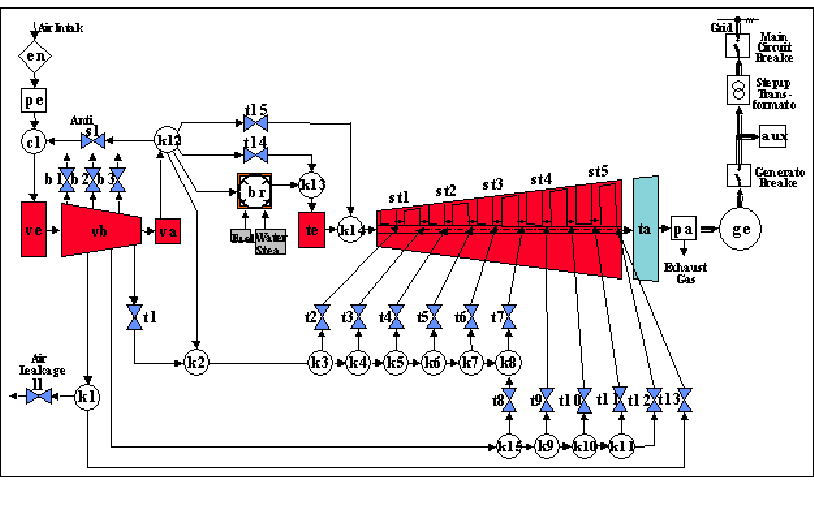
|
|
|
|
[Contents] | [Index] |
Cooperation with: D. Zeitz (Alstom (Switzerland) Ltd., Baden)
Supported by: Alstom (Switzerland) Ltd., Baden
Description:
The more and more integrated modeling in process engineering leads to large-scale problems in static and dynamic process simulation. The complex real-world process models used in this field usually depend on numerous parameters, are in general highly nonlinear and often involve discontinuities. Using concentrated physical models, high-dimensional systems of nonlinear and differential-algebraic equations (DAEs) have to be solved in static and dynamic process simulation, respectively. For that purpose robust and efficient numerical simulation tools are needed. They are urgently necessary to improve process design, analysis, as well as operation in process industries.
The simulation concept developed at WIAS is based on divide-and-conquer techniques and exploits the modular structure of the process, which in most cases is defined by the hierarchical unit structure of the underlying plant (see, e.g., Figure 1). With it the corresponding system of equations is structured into subsystems according to the units and can be partitioned into blocks, which can then be treated almost concurrently within appropriately modified numerical methods. The approach has been implemented in the Block Oriented Process simulator BOP that uses an own compiler to generate a hierarchically structured data interface from a process description with its modeling language MLPE (Modeling Language for Process Engineering).
In the period under report, the homogeneous hierarchical simulation approach of BOP has been extended from chemical engineering to more general process engineering problems, and a steady-state solver for static process simulation problems has been added. Within this approach a block-partitioned system of equations
![]()
![\begin{displaymath}
F_j :
\mathbb{R}\times\mathbb{R}^{m_j}\times\mathbb{R}^{m_...
...hbb{R}^{m_j}, ~~~\sum_{i=1}^{p}m_j=n, ~~~t \in
[t_0,t_{end}] \end{displaymath}](img307.gif)
The numerical methods realized within BOP require a repeated solution of linear systems with the same pattern structure of sparse, unsymmetric coefficient matrices. Our direct solver GSPAR solves these linear systems by using advanced direct methods based on Gaussian elimination. Within this approach a new dynamic column reordering algorithm is used to minimize the number of fill-ins, and a modified partial pivoting technique maintains the numerical stability of the method.
|
| ||||||||||||||||||||||||||||||||||||||||||||||||||||||||||||||||
This modified approach has been implemented in our new linear solver GSPAR2. It has been compared with the solver WSMP (Watson Sparse Matrix Packages) (Anshul Gupta, IBM Research Division, Yorktown Heights, New York, USA) concerning computing time. The results for linear systems with matrices arising from different real-world applications are given in Table 1. Here N denotes the order and NNZ the number of nonzeros of the matrices. The computations have been performed on an IBM 7040-681, pSeries 690 with 64-bit Power4 processors.
We have both ported the simulator BOP to PCs operating under Windows 2000 and realized some extensions in the process description. In particular, the process description language MLPE has been expanded with a so-called global section, which allows to identify variables of different units and to define global constraint equations. Additionally, the implementation of a subset of the language of the Aspen Custom ModelerTM has been started.
References:
|
|
|
[Contents] | [Index] |